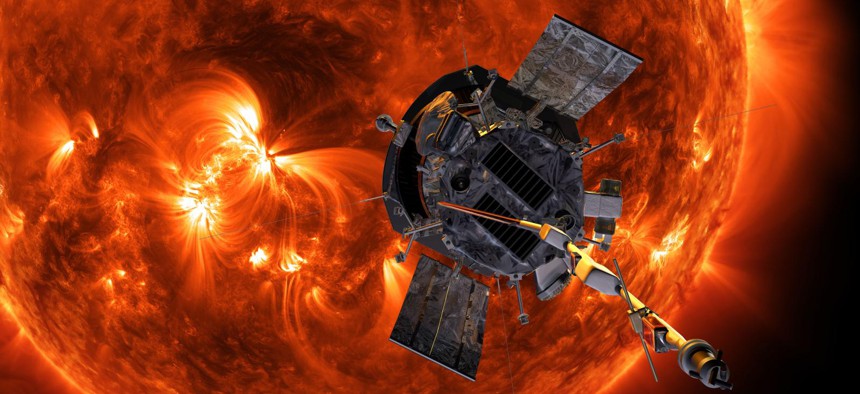NASA's Parker Solar Probe Just Made The Fastest And Closest-Ever Sweep Of The Sun
The probe is expected to break its own records again in 2024.
It lights our sky day after day, so the sun feels familiar to us. But there’s a lot we still don’t know about it. That’s why NASA launched its Parker Solar Probe—to learn more about how the sun works. This week, the spacecraft broke two records: It flew closer to the sun than any other manmade object, and moved faster than any other manmade object, according to a NASA press release.
The probe, which was launched in August, came within 26.55 million miles of the sun on Oct. 29, at over 153,454 miles per hour. That broke the previous records set in 1976 by the German-American Helios 2 probe.
For at least the next seven years, the Parker Solar Probe will orbit the sun, taking photos and measurements of the sun’s corona—the outer layer of the Sun’s atmosphere— and solar winds to help scientists better understand “space weather” that affects the Earth.
Engineers have put a lot of careful work into designing a spacecraft that can withstand the forbidding environment and speeds necessary for this mission. The probe faces destructive heat—around 2,500 degrees Fahrenheit—and radiation as it makes its solar observations, so NASA engineers outfitted it with a state-of-the-art shield. Only 8 feet in diameter and 4.5 inches thick, the small shield is remarkably effective, keeping the probe at a mild 85 degrees Fahrenheit.
This was the probe’s first approach to the sun (it’s set to make 24 close in the coming years). Scientists expect to receive data from this first pass in a few weeks—the probe needs to move away from the sun for them to be able to contact it.
As its mission continues, the probe is expected to break its own speed and sun-approach records: in 2024, it’s slated to come within 3.83 million miles of the sun at a speed of roughly 430,000 miles an hour.







